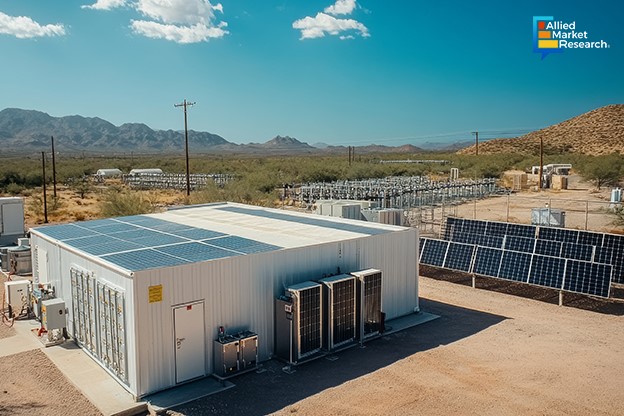Distributed Energy Generation: Exploring the Industry Impact of Renewable Energy Integration

23 Jan
2025
Highlights:
- Introduction
- Role of renewable energy integration in the industry’s growth
- Mergers and acquisitions in the industry
Distributed energy generation or on-site generation is a power production model wherein small, decentralized grids are used to create and distribute electricity to different destinations. While conventional centralized grids involve sending electric power to be sent over large distances, these systems work on distributed energy resources (DERs) which are located close to the load they serve and sometimes contain multiple electricity production and storage components. The gradual shift toward distributed energy generation has increased the demand for DERs such as microturbines, solar photovoltaic panels, small hydropower projects, fuel cells, etc.
Growing electricity demands across the globe improving the revenue share of the industry
The distributed energy generation industry accounted for $360.4 billion in 2023. The market is anticipated to gather a revenue of $1,403.5 billion by 2033, rising at a CAGR of 14.6% during 2024-2033. The exponential surge in global energy demands has played an important role in the growth of the sector. The rising pace of industrialization and urbanization in developed and developing countries has led to a drastic increase in electricity consumption in domestic, commercial, and industrial sectors, thereby creating favorable conditions for the growth of the industry.
However, in the last few decades, the energy and power domain has been highly criticized for its role in environmental pollution and degradation. After the 1992 Rio Earth Summit, several countries have launched initiatives to promote renewable energy to reduce carbon emissions caused by conventional power plants. Since then, the increasing reliance on solar, wind, hydro, tidal, and nuclear energy has contributed to the expansion of the industry. With private companies investing in renewables, these DERs have become much more accessible and affordable for people across all economic segments.
Another important reason behind the growing shift toward distributed energy generation is the reliability and efficiency offered by DERs. Unlike traditional grids which power an entire town or a city, DERs are standalone units that provide energy to a small area or locality. This reduces the pressure on the grid and improves its ability to supply electricity without any interruptions, thus reducing the chance of power outages or grid failures. Additionally, the integration of renewables into DERs enhances the overall flexibility of the system due to the easy availability of power backup.
Furthermore, distributed energy generation systems are much more responsive to local energy needs and demands, which ultimately aids in addressing these demands more effectively. Also, since DERs are located close to the end-use customer, the cost of distributing and transporting the generated electricity is quite low. This, ultimately, reduces the overall expenditure of the end-use consumer on energy consumption.
M&A deals by multinational giants accelerating the industry’s growth and success
Over the years, several major companies in the distributed energy generation industry have established strategic alliances with their peers to expand their operations globally. In August 2024, for example, Budderfly, an Energy as a Service (EaaS) company in the US, announced the acquisition of Sunverge Energy’s distributed energy resource management platform. Sunverge Energy is a leading renewable energy company and has developed a resilient energy infrastructure value chain over the last few years. Using these resources, Budderfly aims to create virtual power plants using DERs, thus improving the resilience of its electricity grids and providing more flexibility to its customers.
Similarly, in January 2025, EQT Transition Infrastructure, a private equity company, announced that it had signed a definitive agreement to acquire Scale Microgrids, a distributed energy generation equipment manufacturer. As per the company’s press release, the acquisition is expected to help EQT invest in clean energy infrastructure and support the transition toward a decarbonized power sector. As per many industry experts, these M&A deals are expected to help companies expand their footprint worldwide and broaden the scope of the industry significantly.
In conclusion, the distributed energy generation market is expected to make substantial gains in the coming period due to the growing integration of renewable energy sources. Additionally, the strategic alliances established by key players in the industry are anticipated to impact the sector positively in the near future.
Contact our experts for insights on the growth drivers and investment opportunities in the industry!

Akhilesh Prabhugaonkar
Author's Bio- Akhilesh Prabhugaonkar holds a bachelor’s degree in Electronics Engineering from the reputed Vishwakarma Institute of Technology. He has a special interest in the fields of forensics, world history, international relations and foreign policy, sports, agriculture, astronomy, security, and oceanography. An ardent bibliophile and melophile, Akhilesh loves to write on topics of his interest and various other societal issues. This love for writing made him enter the professional world of content writing and pursue his career in this direction.
Avenue: Entire Library membership of Allied Market Research Reports at your disposal
- Avenue is an innovative subscription-based online report database.
- Avail an online access to the entire library of syndicated reports on more than 2,000 niche industries and company profiles on more than 12,000 firms across 11 domains.
- A cost-effective model tailored for entrepreneurs, investors, and students & researchers at universities.
- Request customizations, suggest new reports, and avail analyst support as per your requirements.
- Get an access to the library of reports at any time from any device and anywhere.
Related Post
-
How are Submarine Cables Transforming Global Connectivity with Enhanced User Experience?
-
Endoscopy Procedures: Transformations in Techniques and Applications
-
AI-Powered Video Analytics: How the Product Actually Works for enterprises
-
Painting Robots: Transforming Precision Coating and Creative Applications
-
Innovations in Pharmacovigilance Systems Advancing Patient Safety
-
Understanding Edge Security: Keeping Data Safe Near the Source
-
Exploring the Use and Advancements of 3D Laser Scanners in Professional Applications
-
Reinforcing Industrial Controls with Smarter Tools and Training








